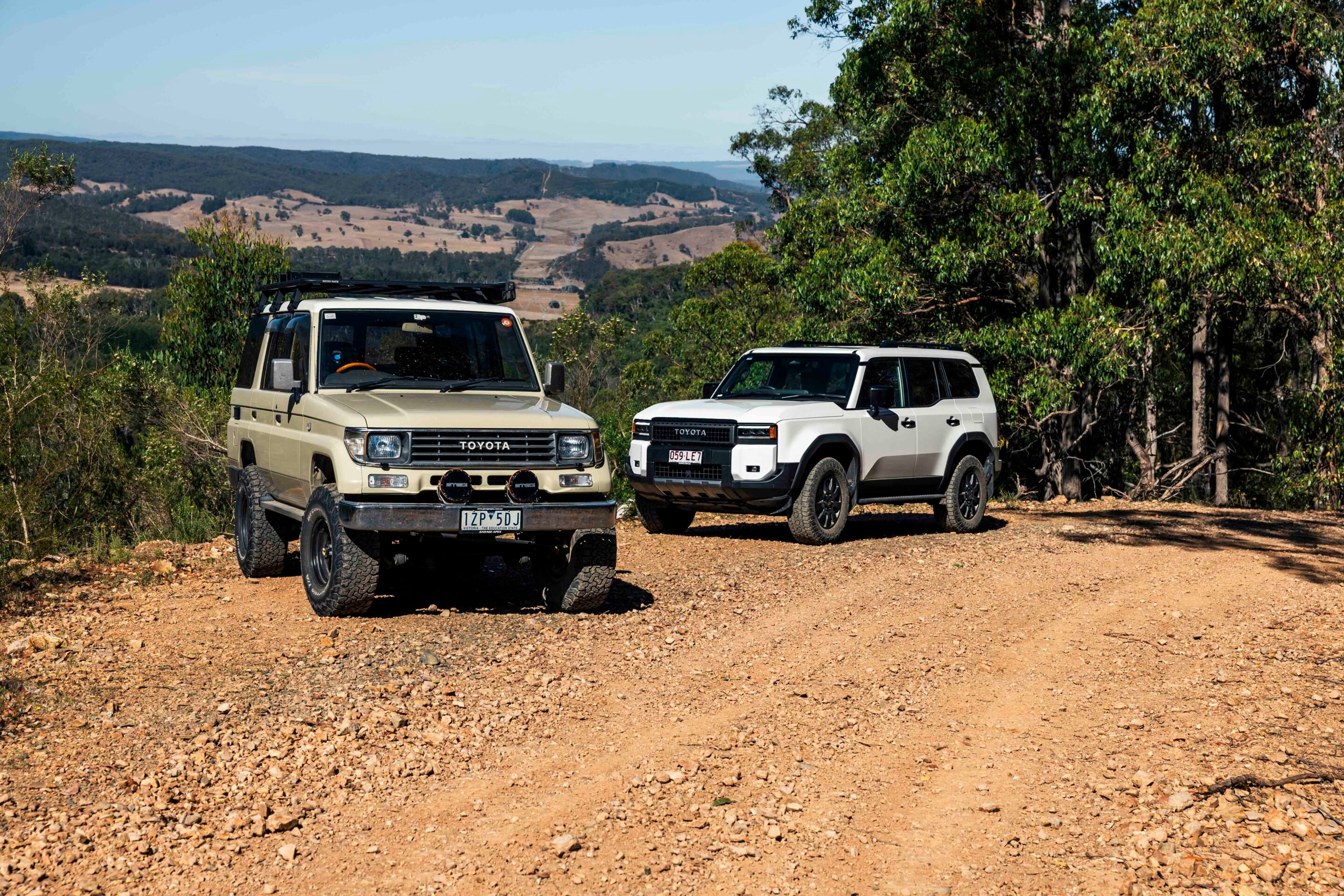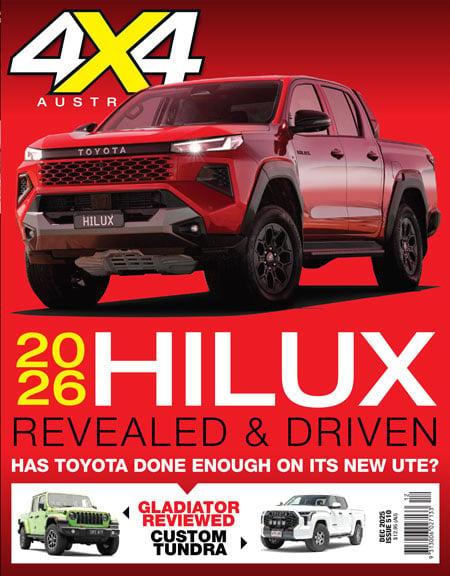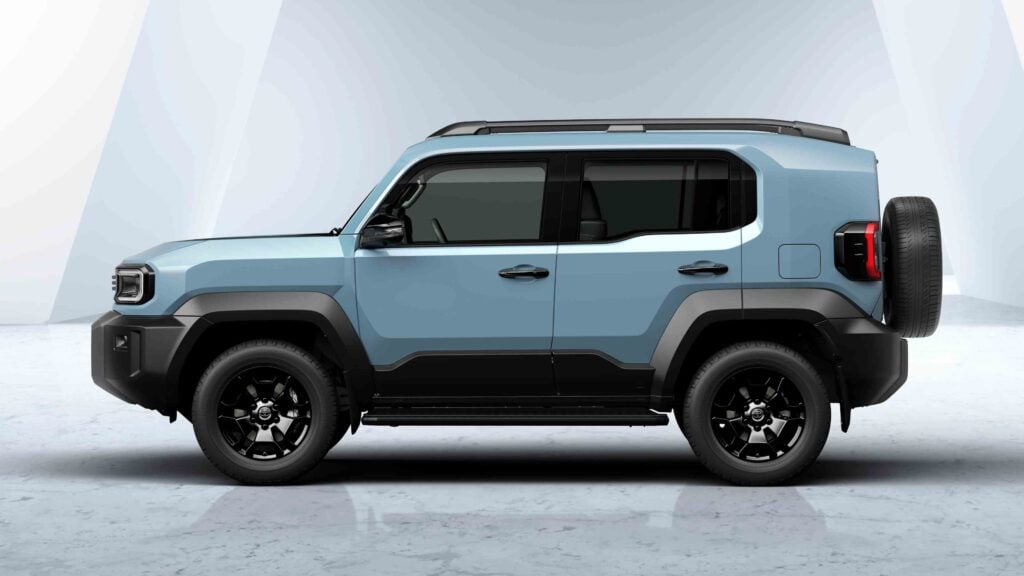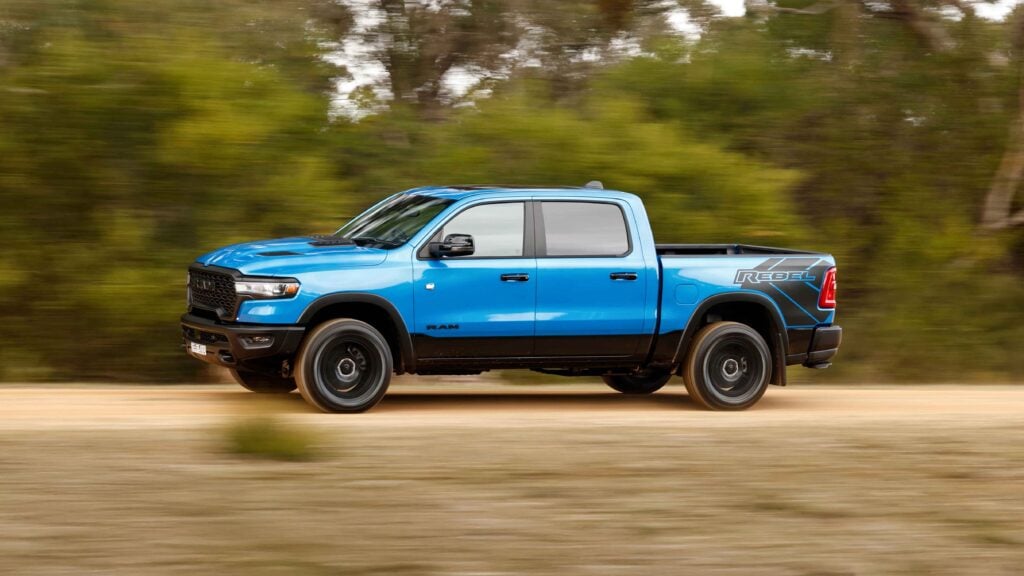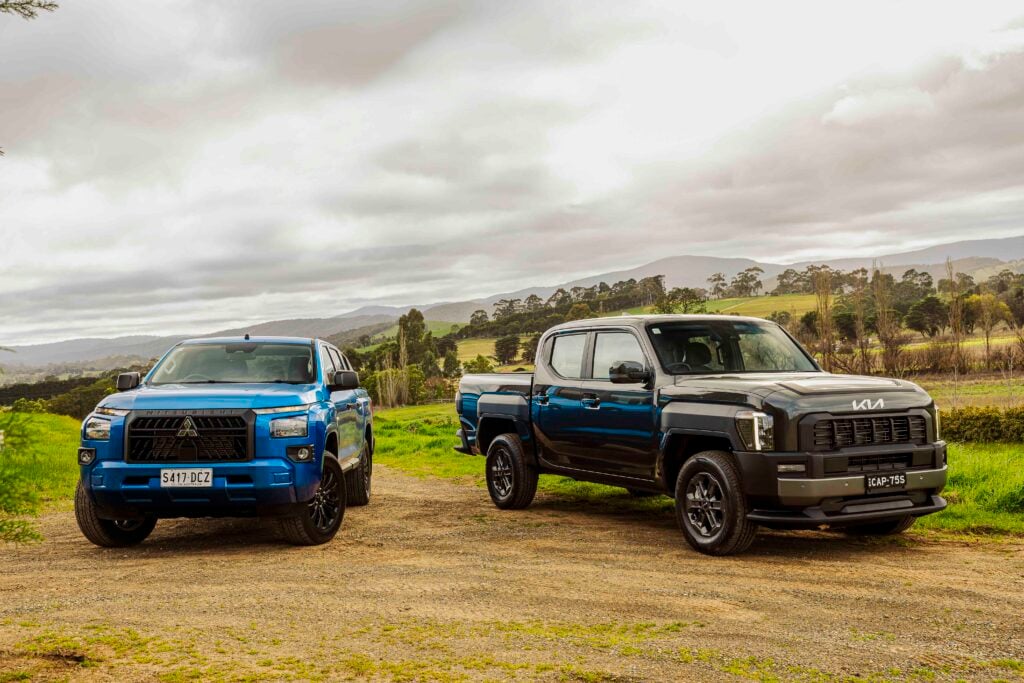The 250 Series Toyota Prado is the fourth generation of the 4×4 wagon to be sold in Australia following on from the 150, 120 and 90 Series models that set the framework for what has become one of the country’s most popular 4x4s for off-road adventures and school drop-offs.
Not widely known is that there was a Prado well before the 90 Series, but it was never sold by Toyota in Australia. The 70 Series Prado first appeared in 1990 when it was sold in Japan and other south-east Asian markets as the 77 and 78 Series and, although it was never sold in Australia by Toyota, there are a few grey-import examples here now.
The 70 Series Prado used what is essentially the four-door wagon body that we eventually got here as the VDJ76 in 2007, but it was fitted with unique front sheetmetal, grille and headlights, plus it had coil-spring suspension and lighter duty axles borrowed from the HiLux of the time. The light-duty wagon was sold as the Prado in some markets and as the LandCruiser II in others.
This adaptation of light-duty underpinnings was similar to what we saw under the Bundera in Australia. The Bundera was a short-wheelbase, two-door 70 Series that got coils and HiLux axles, and was available here with a removable top. Other LandCruiser 70 Series of the time were commercial vehicles that rode on leaf springs and big diffs for hard work, and in the case of the Bundera the inclusion of coil-spring suspension and light-duty axles was made to make the basic vehicles better suited to family and recreational use.
The 70 Series Prado you see here is a 1999 KZJ78 model owned by Saul Zuvic. Saul imported the Toyota from Japan and he uses it for off-road adventures mainly in Victoria.
As the model name suggests, Saul’s car is powered by the 1KZ 3.0-litre turbo diesel engine which we are familiar with from early HiLux models and also the 90 Series Prado. The engine is backed by a three-speed automatic transmission and dual range transfer case that is push-button/vacuum operated.
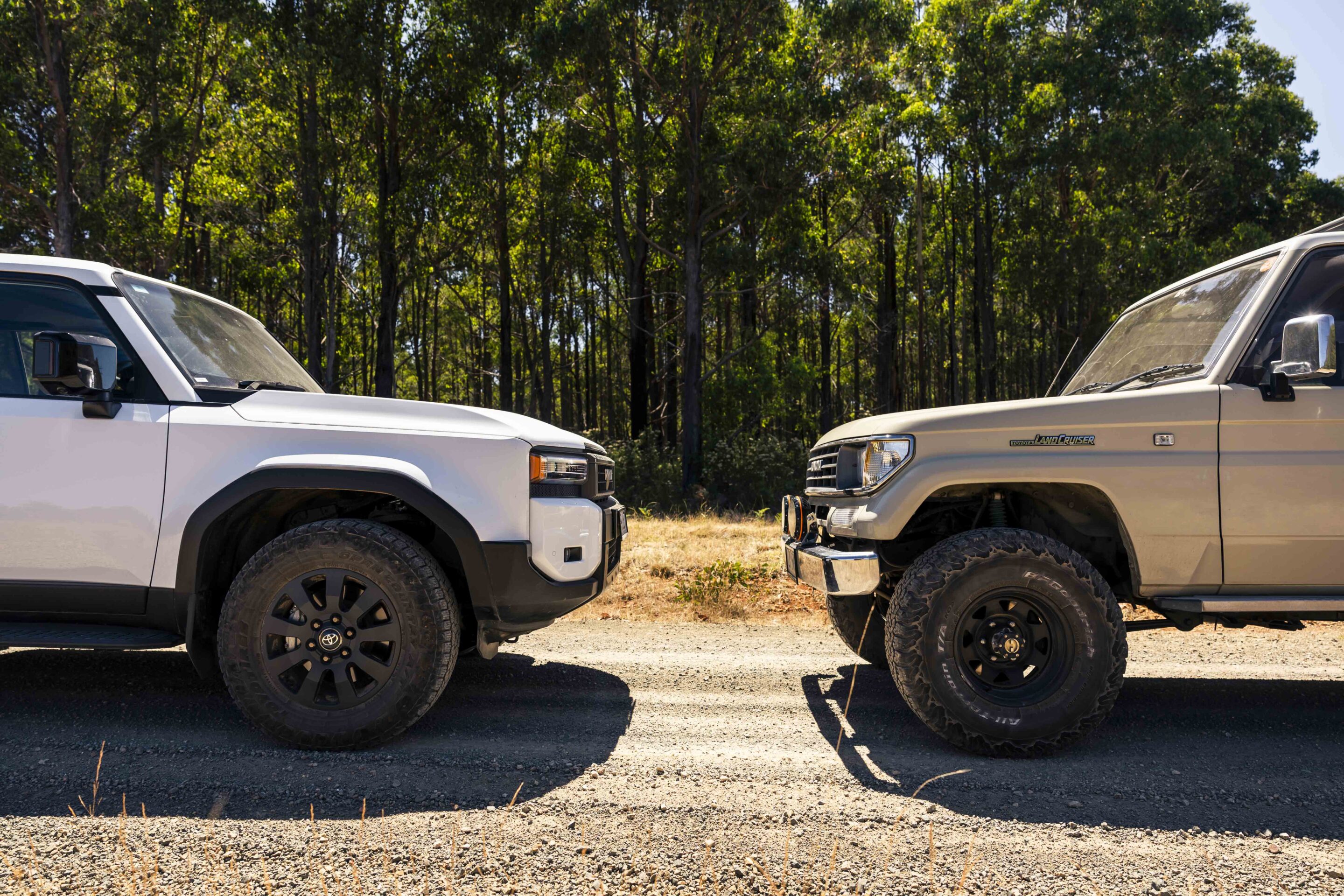
Retro 4x4s are becoming collectible and there’s a certain cool factor that comes with driving one. That coolness is amplified when the vehicle is something different, and the Prado front end differentiates the KZJ78 from the VDJ and now GDJ76s that are common in Australia. Saul says it always raises eyebrows and promotes questions from those that see it when he is driving.
Toyota has gone retro with the look of the 250 Series but it is something that’s hard to manufacture and get the right level of cool. That said Saul recognises the touches made by Toyota’s design team
“I love the exterior of the 250,” he commented. “It harks back to the best-looking LandCruiser in my opinion, the 62 series with the rectangle headlights. The proportions seem similar to the 80 Series, and the rear also reminds me of the 80.
“It’s refined and classy, but tough looking at the same time. But when I hop back in the 70 Series, I find the 250 lacks character. I wonder if in 30 years enthusiasts will be fighting to get their hands on a 250, if of course they last that long.”

The old 78 Prado is highly specified considering its age and the fact that it is a 70 Series. As well as the auto transmission and push-button transfer case, it has power windows with an auto-up function, something you don’t even get in a new 70 Series, while the cloth trim is also plush by 70 standards.
The dash panel is a unique mix of 70 and 80 Series style featuring a soft-touch padded top that curves over the old school analogue gauges. Saul has added a double-DIN sound system for a touch of modernity but it remains a far cry from what you find in the 250 Series Kakadu.
The interior of the 250 Series, on the other hand, is loaded with tech and features starting with a premium 12.3-inch multimedia screen with wireless Apple CarPlay and Android Auto, Bluetooth, cloud-based in-built sat-nav, a panoramic moon roof, leather-accented seat trim with eight-way power adjustment and power lumbar support and memory for the driver and four-way power adjustment for the passenger seat, heated and ventilated front and second-row seats, manually-adjustable driver seat cushion length, digital rear view mirror, heated steering wheel and heads-up display. There’s also a digital instrument cluster, a refrigerated console chiller, power adjustable steering column and a JBL sounds system blasting out through 14 speakers.
It’s a full on luxury interior worthy of the $100k price tag of the top-of the line model, but it will be many decades before the 250 will ever be as cool as Saul’s retro 78.
Off-road performance
After a stint behind the wheel of the Kakadu Saul said, “It’s a world away from where the Prado started, as a rugged, simple four-wheel drive. The suspension in the 250 soaks up rough unsealed roads, making them feel like fresh tarmac would in the 70 Series Prado. It’s comfortable and quiet in the cab, and feels like a luxury yacht, as you would expect from a modern four-wheel drive pushing a $100k price tag.”
Meanwhile, we jumped into Saul’s 78 on the same tracks. Getting behind the wheel the seating position is much like that in my own 1985 BJ73 but the dash pad is a more modern and softer design. The 1KZ engine sounds more like the BJ engine in my Cruiser than the 1GD powering the 250 but it gets along with a similar feel. The auto transmission feels great for its age and the updated suspension is doing a great job.
Saul has upgraded the suspension under the Prado with Tough Dog 50mm raised coils and Pro Comp monotube shocks. There’s a familiar rattle and squeak from the rear doors of the 70 but it just adds to the cacophony that comes with a classic old off-roader, adding to the character.
Saul has set up the 78 as a touring 4×4 and to date it has taken him to Coffin Bay in South Australia, as well as Victorian High Country staples like Mt Buffalo, Mt Buller, Howqua Hills, Alpine National Park, Mt Wellington, the Avon Wilderness area and Licola.
Touring kit includes a set of drawers with a fridge slide holding a MyCoolman fridge, a 100Ah lithium battery, a Rhino-Rack and platform, and a set of Stedi spotlights on the factory Toyota front bumper. Saul had a set of steel wheels wearing 33×10.5-15 BFGs on it the day of our shoot but we’ve also seen it wearing skinnies with retro Toyota hubcaps, which look super cool.
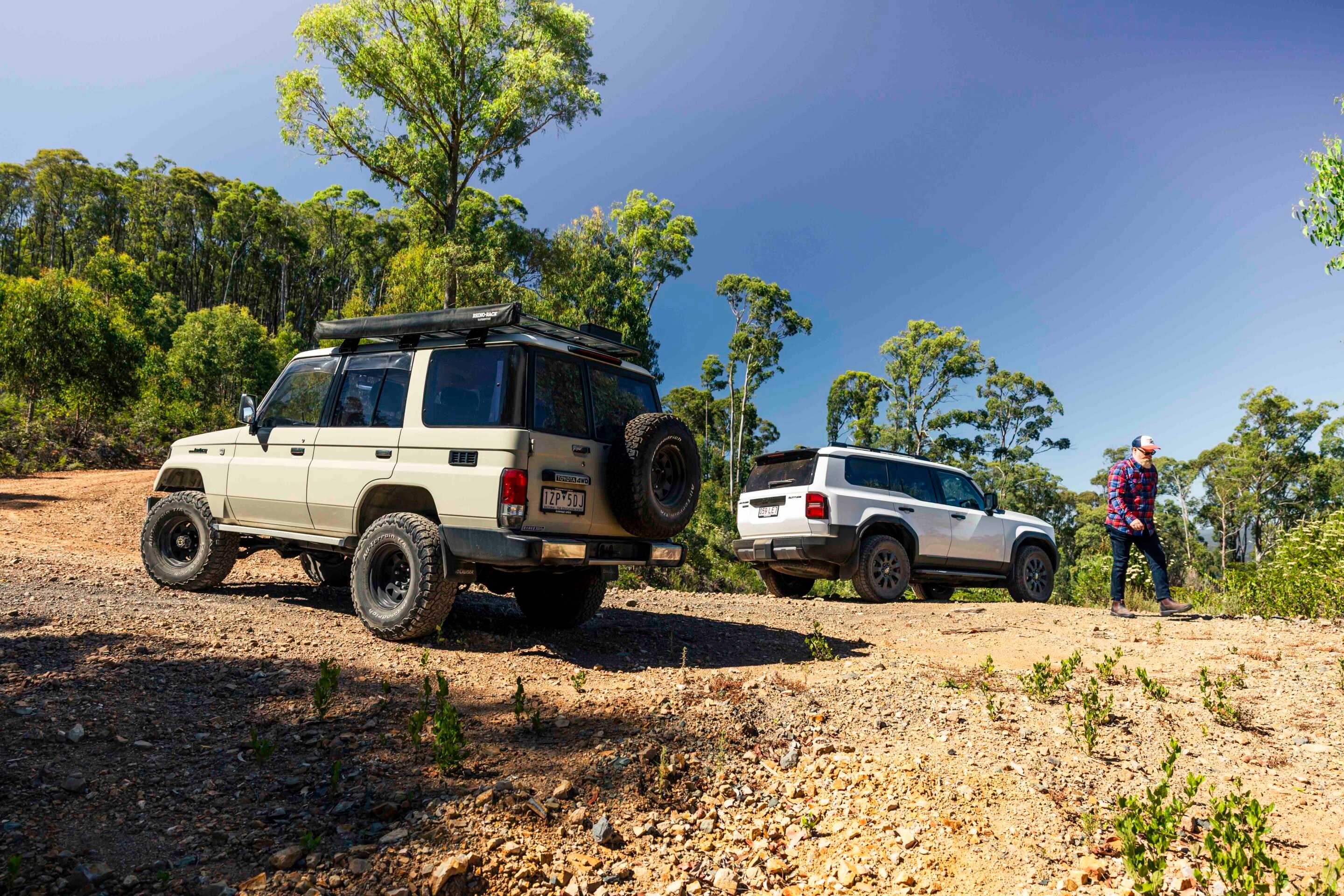
Verdict
“Would I trade it for my 70?” said Saul of the 250. “Yes, of course, it would be daft not to. But would I love it as much and will it be spraining necks with a street presence you can only get from a 1990s vintage Cruiser? No way!”
It will be many years before a 2025 model 4×4 could ever be considered cool or vintage, and would the authorities let us drive old cars by that time? It can be argued that keeping an old vehicle like Saul’s Prado on the road is much better for the environment than building an all-new one, with all the plastics, chemicals and precious metals required, no matter how much alternative fuels and technology you throw at it.
We recommend
-
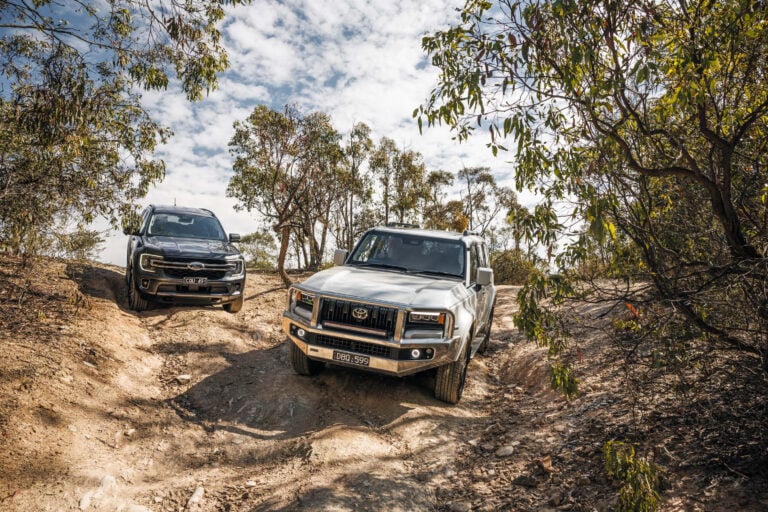 4x4 Comparisons
4x4 ComparisonsPrado Kakadu vs Everest Trend: All-new 250 Series takes on its biggest rival
The new Prado is here and bursting out of showrooms, but how does it compare to the Ford Everest?
-
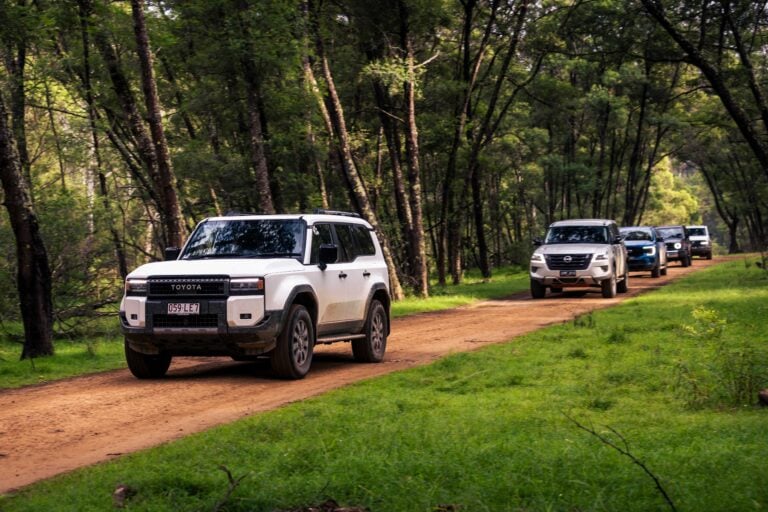 4x4 Comparisons
4x4 ComparisonsNissan Patrol Warrior versus Toyota Prado Altitude
Two off-road big dogs go head-to-head
-
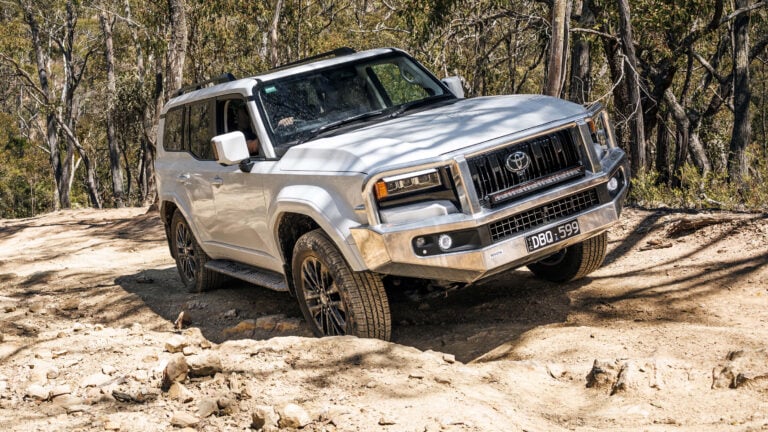 Reviews
Reviews2025 Toyota Prado Kakadu off-road review
Should the seven-seat Prado Kakadu still be on your shopping list, despite its horrendous third-row cargo design?


